|
Brutus, Duke, Coco, Lola and Jake...sure, they're fairly common pet names, but they're also the names of just a few of the pets that died last year because they were left in cars on warm (and not necessarily hot) days while their owners were shopping, visiting friends or family, or running errands. What's so tragic is that these beloved pets were simply the victims of bad judgment. Want numbers? An independent study showed that the interior temperature of vehicles parked in outside temperatures ranging from 72 to 96° F rose steadily as time increased. And cracking the windows doesn't help. ...add to that the fact that most pets are not properly restrained while in the car, and you've got some dangerous situations – for people and pets alike. Unrestrained pets can be seriously or fatally injured, or could even hurt you, in a collision or sudden braking situation. In addition, they're a distraction for the driver, which increases the risk of driver errors. According to a 2010 American Automobile Association (AAA) survey, 2 out of 3 owners engage in distracting behaviors (playing with, feeding or petting their dog, or letting their dog sit in their lap) when pets are in the car...and according to the National Highway Traffic Safety Administration (NHTSA), approximately 20% of injury crashes involve distracted driving. Please don't become another statistic: only take your pets in the vehicle with you when you absolutely need to, and always properly restrain your pets while in the vehicle. How can you help prevent these injuries and deaths?
A Peaceful Farewell provides compassionate at home pet euthanasia to fellow pet owners in Chandler, Gilbert, Mesa, Tempe, Ahwatukee, Scottsdale, and most of the Greater Phoenix Metropolitan Area.
0 Comments
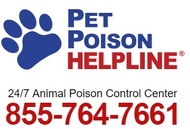 Avoid the Holiday EmergencyThe holiday season may be a time for giving, except when it comes to giving certain table scraps to your dog. Foods commonly found on our dinner and party tables such as turkey, pork and cheese are too high in salt and fat for our pets. An overload of fat can even lead to medical issues like pancreatitis, which causes the pancreas to become inflamed. Forgo the holiday table scraps for Fluffy and Fido this year, especially when it comes to these 5 foods, which can be deadly if consumed in sufficient quantity. 1. Chocolate Chocolate is a well known off-limits indulgence for dogs. However, during the holidays many people use baking chocolate in recipes and forget about the ingredient by the time the desert hits the table. According to Dr. Tina Wismer, medical director at the ASPCA Animal Poison Control Center, the darker the chocolate is, the more serious the poisoning can be — making baker’s chocolate and cocoa powder more dangerous than milk chocolate. Make sure this holiday season that your dog does not ingest any chocolate, especially dark chocolate or baker's chocolate. 2. Onions (and Garlic) Onions, garlic and other foods in the Allium family, such as leeks and scallions, can all be extremely poisonous to dogs if consumed in sufficient quantity. "Onion and garlic poisoning results in oxidative damage to the red blood cells (making the red blood cells more likely to rupture) and gastroenteritis (e.g., nausea, oral irritation, drooling, abdominal pain, vomiting, diarrhea)," according to the Pet Poison Helpline. Garlic is also considered to be about five times as potent as onions, so think again before offering your dog some potatoes with the ingredient. 3. Raisins (and Grapes) Most stuffing recipes include raisins as an ingredient, which can be toxic to your dog. Raisins and grapes (which is the un-dried version of a raisin) can cause vomiting, diarrhea and eventually acute renal failure in dogs. 4. Xylitol While you may be making the healthier choice by cooking with artificial sweeteners over the real thing, sweeteners containing Xylitol are poisonous to dogs, causing vomiting, tremors, seizures, tarry stool and even death. According to the Pet Poison Helpline (PPH), a 10-pound dog would only need to eat a single piece of sugar-free gum to reach a potentially toxic dose. 5. Alcohol Beer, wine and cocktails aside, alcohol can also be found in desserts and can be created in your dog’s stomach if they ingest homemade or store bought yeast dough used in making holiday breads and rolls. Even small amount of alcohol, both ingested through alcoholic beverages and produced in the stomach, can be life threatening, making it important to call your vet before you notice any serious poisoning symptoms like seizures. Source: Pet MD A Peaceful Farewell provides compassionate at home pet euthanasia to fellow pet owners in Chandler, Gilbert, Mesa, Tempe, Ahwatukee, Scottsdale, and most of the Greater Phoenix Metropolitan Area.
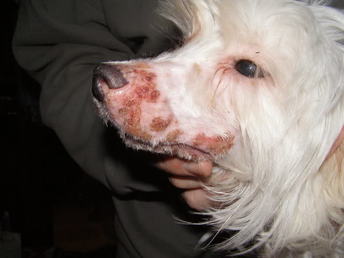 Staph Infection in Dogs and Cats: Don’t Panic A staph infection in your dog or cat, thank goodness, is usually nothing to worry about — particularly if you get in to see your veterinarian as soon as you notice something is wrong. Bacteria of the genus Staphylococcus are what we call “ubiquitous.” In other words, staph is a very common bacteria that normally lives everywhere — in the environment, on the skin, and in the noses and mouths of our pets. High-risk Scenarios for Staphylococcal Infections in Pets Typically, a staph infection in your dog or cat is not troublesome. PHEW! That being said, staph infections are able to take advantage of certain situations and an infection can develop.This can make staphylococcus an “opportunistic pathogen.” It is most likely to take advantage of:
Signs and Symptoms of an Infection When staph causes an infection, we can see many different symptoms, which largely depends on which part of the body this opportunistic invader is invading. Symptoms can be classified into two main categories, namely “systemic” (affecting the whole body) or “specific.” Systemic signs of a staph infection can include:
These systemic symptoms are similar for nearly all infections. More specific symptoms of a staph infection might include:
In addition, approximately 8 to 10% of all urinary tract infections in pets are caused by “Staph.” Signs of a urinary tract infection include:
See Your Veterinarian! The most important thing to remember: if your pet is acting ill, see your veterinarian. As a responsible pet owner, it is wise to develop a relationship with a veterinarian you know and trust. That way, at the first sign of trouble you can get our pet treatment. Source: Trupanion.com / Denise Petryk, DVM A Peaceful Farewell provides compassionate at home pet euthanasia to fellow pet owners in Chandler, Gilbert, Mesa, Tempe, Ahwatukee, Scottsdale, and most of the Greater Phoenix Metropolitan Area.
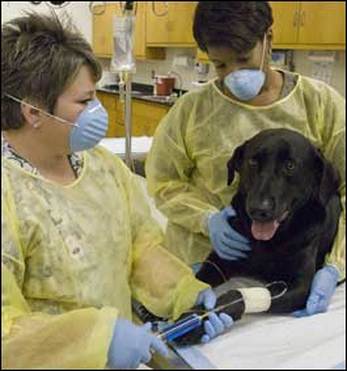 Humans with terminal cancers or with widespread metastases are offered treatment with the hope of an extended lifespan, despite a grim prognosis. People are routinely administered second, third, fourth, and beyond treatment plans when they fail to respond to the frontline therapies. This is done with little to no evidence-based information that would suggest such interventions will actually result in a positive outcome. The benefit of aggressive therapy in patients with terminal cancers is poorly described. The American Society of Clinical Oncology (ASCO) identified chemotherapy use among patients for whom there was no clinical value as “the most widespread, wasteful, and unnecessary practice in oncology.” When I read those words as a veterinary oncologist, I had only one thought. Ouch. The majority of patients I treat with cancer will ultimately succumb to their disease. Pets are typically diagnosed at an advanced stage of disease, and a cure is nearly impossible. We also accept much lower rates of toxicity with our chemotherapy protocols than our human counterparts; therefore, with good reason, we can’t treat animals’ cancers to the “fullest potential.” I would estimate that the premise of treatment for greater than 90% of cases I see is rooted in palliation (i.e., relief from pain) rather than a true belief of cure. Yet, veterinary oncology is fundamentally based on principles of human oncology. So if the data for human oncology tells us that the treatment of terminally ill cancer patients is not only poorly beneficial but also wasteful (in terms of not only finances but resources), how can I justify the recommendations I make each day? The answer is simple: Veterinary oncology is premised on the idea of treatment making our patients feel better, not worse. Rarely are animals diagnosed with cancer incidentally. Most show some sort of clinical signs prior to their diagnosis of cancer. Treatment, therefore, is aimed at relieving such signs and returning their quality of life to their baseline level. A study recently published in the Oncology edition of the Journal of the American Medical Association examined the evaluation of the use of chemotherapy and quality of life for people with end-stage cancer. Specifically, researchers were interested in knowing whether chemotherapy had a positive or detrimental effect during the last week of life for human patients with cancer, and if the effect was dependent on the patient’s overall health status prior to treatment. In people, performance status is used to evaluate a patient’s quality of life. There are several different scoring systems, with the Eastern Cooperative Oncology Group (ECOG) being widely accepted and outlined as follows: In the aforementioned study, a patient’s quality of life near death (QOD) was measured using a validated caregiver’s rating of their mental and physical distress during their final week of life. Results from the study raise several interesting points:
Despite the shared foundation of human and veterinary oncology, there is an enormous disparity between the end goals of each discipline. Human oncology is based on the concept of treating patients with the mantra of “life at all costs,” while veterinary oncology accepts our limitations, choosing to “maintain or improve quality of life” over cure. This is the message I attempt to relay during each new consultation I see. This is the information I am passionate about dispersing with my written and spoken dialogue each day. This is why I work so hard to help animals and their owners at every possible junction I am afforded. The battle to dispel the misconceptions about cancer care in animals is never-ending but worth enduring, knowing I can make a difference if even for just a few. Especially if the few are those who feel the “ouch” factor mentioned above just a bit deeper than all the others. Source: Pet MD / Dr. Joanne Intile A Peaceful Farewell provides compassionate at home pet euthanasia to fellow pet owners in Chandler, Gilbert, Mesa, Tempe, Ahwatukee, Scottsdale, and most of the Greater Phoenix Metropolitan Area.
Although it’s nearly impossible to predict which breed of dog will live the longest or be the healthiest, there are certain breeds that seem to have lower instances of genetic diseases, bone-related injuries and conditions relating to their skin and coat. Take a look at which breeds are thought to be among the healthiest and how to help your dog live a long, healthy life, below. Australian Cattle Dog While there’s no way to prove which breed is the healthiest, some working breeds, including Australian Cattle Dogs, may be among those with the least number of health-related issues. “Unfortunately, there’s no hard data that provides a scientific answer,” said Jennifer Coates, DVM in Fort Collins, Colorado and veterinary advisor to petMD.com. “In my experience, dogs that are still being bred to do a job tend to be the healthiest.” Australian Cattle Dogs have been traditionally used for cattle herding and have remained popular working dogs because of their intelligence, problem solving skills and soft but assertive bites with cattle. With a lifespan of about 10 to 13 years, Australian Cattle Dogs make excellent companions to high-energy families or on-the-go owners. Major health concerns include hip dysplasia, elbow dysplasia and deafness. Foxhound Another working breed listed as one of the healthiest by Coates, Foxhounds have been primarily used for foxhunting and, because of their working dog genes, may be healthier than dogs bred for show. “When breeders focus on function instead of just good looks, they naturally weed out the dogs that develop debilitating illnesses or injuries,” Coates explained. With a lifespan of 11 to 13 years, Foxhounds make an excellent choice for families who live in rural areas or on large farms and are not prone to many major health problems. They require moderate daily exercise in the form of a walk or jog and need minimal grooming aside from an occasional brushing. German Shorthaired Pointer An all-purpose hunting dog known for its intelligence and proficiency with many different types of game and sport, the German Shorthaired Pointer is another healthy breed, according to Coates. With an average lifespan of 12 to 14 years, German Shorthaired Pointers are prone to health concerns like hypothyroidism, hip dysplasia and gastric torsion. A high-energy breed that requires plenty of daily exercise, German Shorthaired Pointers will need plenty of access to the outdoors and, like all breeds, require mental stimulation throughout the day. “Providing dogs with mental stimulation, physical exercise and maintaining them at a healthy weight will go a long ways towards keeping any dog healthy, regardless of its breed,” Coates shared. Border Collie Another high-energy breed renowned for its agility, intelligence and obedience, Coates lists the Border Collie as one of healthiest. With a lifespan of 10 to 14 years, Border Collies are prone to health problems including seizures and hypothyroidism. A breed that is eager to please with a high level of trainability, Border Collies should be provided with plenty of daily exercise as well as regular access to the outdoors. Chihuahua Known for being the smallest breed in the world, Chihuahua’s are loyal, intelligent, and among the healthiest breeds, according to Denise Petryk, DVM and director of veterinary services at Trupanion pet insurance. With an average lifespan of 14 to 18 years, Chihuahua’s are known to suffer from health conditions including hypoglycemia, patellar luxation and pulmonic stenosis, a heart valve disorder. A smooth-coated Chihuahua requires minimal grooming while longhaired varieties require brushing two to three times a week. Because of their size, Chihuahuas require minimal exercise beyond a short walk. Havanese Compared to other dogs of the same size, Petryk also lists the Havanese among healthy breeds. A popular friendly pet known for its friendly demeanor, Havanese live between 12 to 14 years and suffer from health problems including patellar luxation, deafness and elbow dysplasia. A non-shedding breed that requires brushing several times per week to prevent tangles, the Havanese breed requires short walks to meet their exercise needs. In addition to keeping your pup fit, Petryk also recommends offering your dog high quality food and treats to help them stay healthy. Australian Shepherd With relatively few claims for bone-related injuries as well as conditions related to the coat and skin, Australian Shepherds are also relatively healthy, according to Petryk. An all-purpose farm dog, Australian Shepherds are intelligent, obedient and agile and require regular exercise and mental stimulation. With an average lifespan of 12 to 15 years, the breed is prone to health issues including hip dysplasia, hypothyroidism and Collie Eye Anomaly, an inherited congenital eye condition. Australian Shepherds require minimal grooming beyond an occasional combing and, as with all dog breeds, Petryk recommends giving your dog regular, high quality flea and tick prevention with products recommended by your veterinarian to maintain its health. LabradoodleA popular mixed breed that is a cross between a Labrador Retriever and a Poodle, Petryk lists Labradoodles among those with relatively few claims for bone-related injuries and conditions related to the coat and skin. The breed’s coat should be shampooed and brushed regularly and trimmed at least twice a year. They may suffer from health conditions commonly seen in its parent breeds including hip dysplasia, Addison’s disease and eye disorders including progressive retinal atrophy. To ensure your dog lives a long, healthy life, Petryk recommends establishing a relationship with a veterinarian you like and keeping up-to-date with any preventative vaccinations they suggest. She also advises pet owners to schedule annual physical examinations for their dogs, including dental assessments. Siberian Husky A medium-sized dog renowned for its abilities as a sled and racing dog, the Siberian Husky is relatively healthy compared to other breeds of the same size, Petryk said. While the breed is still used as a working dog, it has also become a loving pet for active families and those who love the outdoors. With a lifespan of 11 to 13 years, Siberian Huskies may suffer from health problems including progressive retinal atrophy, hypothyroidism and cataracts. In addition to establishing a relationship with a veterinarian you trust, Petryk suggests becoming familiar with you local emergency and specialty hospitals, learning to provide pet first aid and getting pet insurance to prepare yourself in case your dog has a health-related emergency. Mixed Breed With a unique genetic markup and a lower level of inbreeding, mixed breed dogs are generally among the healthiest, Coates said. “A recent study showed that mix breed dogs were significantly less likely to develop ten genetically based diseases, including some types of heart disease, musculoskeletal problems, allergic skin disease and hyperthyroidism,” she added. Source: Pet MD / Jessica Remitz A Peaceful Farewell provides compassionate at home pet euthanasia to fellow pet owners in Chandler, Gilbert, Mesa, Tempe, Ahwatukee, Scottsdale, and most of the Greater Phoenix Metropolitan Area.
We can’t live without water. But our waters can often be dangerous to us and our pets. A Florida television channel reported last week about the deaths of two men who had contracted a rare flesh destroying bacteria found in salt water. Six others were reported to have been stricken with the same bacteria. Whether the condition was contracted directly from the water, or from oysters or fish from those waters, is still not clear. There have been no reports of dogs being stricken by the same bacterial infection. The incident, however, got me to thinking about the many ways that water can harbor danger to our pets. This post will explore a few. Jellyfish Jellyfish washed onto the shore are a very common finding for beach combers and their beach combing dogs. The tentacles of these creatures have organs that release a stinging toxin whose potency varies with the different species of jelly fish. Even dried out tentacles in the sand or mixed in seaweed can still release the toxin. Dogs that come in contact with the tentacles or bite them can have a mild to serious local allergic reaction, or a more serious anaphylactic reaction resulting in shock. That is exactly what happened to 2-year-old pit bull named Diamond after she bit the tentacles of the most toxic of jellyfish, the Portuguese Man O’ War. After several days in intensive care, including transfusions, Diamond survived and is back to her old self. Many dogs are not that fortunate. If your dog has been stung by jellyfish tentacles, even one of the less toxic species, remove the tentacles without touching them directly with your bare hands and immediately seek veterinary care. Blue-Green Algae Warm weather can promote massive growth of blue-green algae in standing bodies of fresh or brackish (the slightly salty waters of lagoons, estuaries, and ponds near the ocean) waters. The musty or foul smell of the algae is often attractive to dogs. It can cause skin rashes for dogs swimming in the algae infested water. Dogs should be thoroughly washed as soon as possible. For dogs that drink algae contamintaed water, toxins in the algae can affect the kidneys, liver, intestines, and nervous system. Initial symptoms are vomiting, diarrhea, weakness, and difficulty walking. Immediate veterinary care is also advised in these cases. Parasites and Bacteria Standing areas of fresh water like small lakes, ponds, and even puddles can host various parasites and bacteria. Giardia and Cryptosporidium are the most common parasites. These parasites cause gastrointestinal distress resulting in vomiting and diarrhea. Most dogs recover quickly from the infection, but puppies and older dogs with compromised immune systems can be severely affected and need medications and diet modification in order to recover. Leptospirosis can also be found in small bodies of water that have been contaminated by rodents and other small animal that urinate in the water. Although not as common as water-borne parasites, the bacteria is much more dangerous to dogs that drink the contaminated water. Leptospirosis causes kidney damage that can lead to kidney and liver failure. Infected dogs may be lethargic and vomit. With early diagnosis and treatment, dogs do not suffer long-term kidney or liver problems. Vaccines are available to prevent the disease but they are somewhat controversial due to their tendency to cause allergic reactions and because of the vaccination frequency needed to effectively prevent the disease. Salt Water Poisoning Dogs love to frolic in the ocean, but salt water is toxic to humans and dogs if they drink too much. Ocean soaked tennis balls or other absorbent fetch toys contain enough salt to cause problems for the dogs that are fetching them. Mild ingestion of salt water can cause “beach diarrhea.” The excess salt (or hypernatremia) in the intestines draws water from the blood into the intestines, causing the diarrhea. The diarrhea can sometimes contain blood and mucous. If your dog drinks large amounts of salt water, hypernatremia can lead to vomiting, dehydration, incoordination, seizures, and require veterinary care. Avoid salt poisoning by taking a break every 15 minutes away from the water to offer fresh water to the dog. If your dog won’t drink willingly, use a bottle with a sports cap and squirt fresh water into the mouth. Water activity is great for dogs and the exercise far outweighs the risks, but it is important to be mindful of the risks in the water you dog so dearly loves. Source: Pet MD / Dr. Ken Tudor A Peaceful Farewell provides compassionate at home pet euthanasia to fellow pet owners in Chandler, Gilbert, Mesa, Tempe, Ahwatukee, Scottsdale, and most of the Greater Phoenix Metropolitan Area.
As the popularity of dog parks explodes across the nation, it's important to understand dog park "etiquette." As leash laws become more restrictive, dog owners are discovering that the parks are a great place for exercising and socializing their dogs in a safe environment. Ranging from a basic enclosed field to a fancy space filled with agility courses, water fountains and doggie swimming ponds, all dog parks have one thing in common: they provide a place where dogs can run and play off-leash. Unfortunately, not every dog park is visited by responsible owners. Even a few inconsiderate people can ruin the experience for everyone. Make sure you're not one of them by following these simple dos and don'ts of the dog park: 1. Observe all park rules. It's a good idea to make your first visit alone so that you know the park rules before bringing your dog. Failure to follow the rules can cause a park to be shut down or a serious incident to occur. 2. Never leave your dog unattended at the park. Trouble can brew quickly when unfamiliar dogs gather – you'll want to stay alert and in close proximity to your dog at all times. 3. If your dog becomes aggressive, leash it immediately and leave. It's important to know you are legally liable for your aggressive dog. 4. Don't bring puppies younger than 4 months who have not had all the required vaccinations. It puts the health of the puppy, as well as the health of other dogs, at risk. 5. Make sure your dog is up-to-date on all of its vaccinations, and that its license and rabies tags are visible on his collar. 6. If your female dog is in heat, keep her home. It would be terribly irresponsible to bring her to the dog park with dozens of dogs running loose, including the possible unneutered male. 7. Many parks will have a posted limit on the number of dogs one person can bring into a dog park. Abide by that number, and don't bring more dogs than you can easily handle. 8. If children accompany you to the park, ensure their safety by staying alert for aggressive dogs. Remind children to always ask an owner for permission before petting a dog. 9. Dispose of your garbage correctly. Old food, food containers and cigarette butts are harmful to dogs if eaten. 10. Finally, pick up the poop! Most dog parks have poop bags, scoopers and special waste receptacles. If yours doesn't, bring a plastic bag with you and dispose of waste properly. When these simple rules of safety and courtesy are followed, everyone has a good time. Dogs get to play with other dogs, and their owners meet like-minded people with a common interest – the love of dogs. Source: WebVet / Nancy Dwyer A Peaceful Farewell provides compassionate at home pet euthanasia to fellow pet owners in Chandler, Gilbert, Mesa, Tempe, Ahwatukee, Scottsdale, and most of the Greater Phoenix Metropolitan Area.
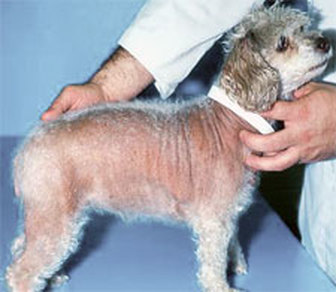 What’s Causing the Dog Hair Loss? Seeing a dog lose his or her hair can be disconcerting to witness. However, what’s most important when dealing with alopecia, as it is referred to medically, is identifying the underlying cause of the hair loss in order to devise an appropriate treatment plan. Here are five common culprits of hair loss in dogs that should be discussed with your veterinarian. 1. Allergies Allergies are a frequent cause of hair loss in dogs. This may due to environmental triggers such as pollen, molds and dust mites, or due to parasitic triggers like fleas or mites. Food allergies are another possible cause of hair loss. Typical symptoms of an adverse allergic reaction include itchiness resulting in excess scratching, biting, and, of course, hair loss. In the case of flea allergies, it is recommended that dogs take flea preventatives as a way to minimize threats of a full-blown flea infestation. 2. Infection or Infestation An infestation with parasites such as fleas, ticks, and mites (scabies, mange) is another source canine alopecia. Along with hair loss around the ears, eyes, abdomen, and chest, signs your dog may have mites or fleas/ticks include inflammation, itching and redness. Bacterial or fungal infections, such as in the case of ringworm (which is actually a fungus), can also be attributed to hair loss in dogs. Symptoms of ringworm include circular or irregular hair loss, inflammation, and infected crusts. 3. Cushing's Disease Hyperadrenocorticism, also known as Cushing's disease, is a condition caused by the prolonged exposure of the body’s tissue to excessive levels of the hormone cortisol. Symptoms of Cushing’s disease include hair loss, darkening of the skin, and the development of a pot-bellied abdomen. Cushing’s disease commonly occurs in middle-aged to senior dogs, though it can also affect dogs that overuse corticosteroid drugs. 4. Genetics There are some breeds of dog that are more genetically prone to baldness than others. First there are the hairless dogs that have been bred for the attribute such as the Chinese Crested, Mexican Hairless (Xolo), and American Hairless Terrier. Other dog breeds, such as the Doberman Pinscher, Dachshund, Chihuahua, Italian Greyhound and Whippet, sometimes suffer from patchy or pattern baldness on the outer ear, chest, back, thigh, or lower neck. 5. Pressure Sores Pressure sores, also called bedsores or decubital ulcers, are localized injuries where the dog’s elbows or other bony pressure points (hips, hocks, etc.) come into contact with hard surfaces regularly. This constant pressure and friction causes the skin to callus, lose hair and sometimes crack and bleed. Pressure sores are more common older dogs, especially large or heavy breeds. A Peaceful Farewell provides compassionate at home pet euthanasia to fellow pet owners in Chandler, Gilbert, Mesa, Tempe, Ahwatukee, Scottsdale, and most of the Greater Phoenix Metropolitan Area.
The Cook County Department of Animal and Rabies Control is reporting that there have been more than 1,000 cases of canine influenza in the Chicago area in recent weeks. Unfortunately, five dogs have died from the flu during this outbreak. Canine influenza is a relatively new disease having first been diagnosed in a group of racing greyhounds in 2004. It developed after the equine influenza virus mutated and gained the ability to spread from dog to dog. The disease has been reported in most states and in Washington, D.C. Chicago is just the latest hotspot. For most dogs, the symptoms associated with canine influenza are indistinguishable from what we traditionally call “kennel cough” — a condition that can be caused by a variety of germs like the parainfluenza virus, or Bordetella bronchiseptica bacteria. All of these respiratory infections typically make dogs cough, sneeze, have a runny nose, lose their appetite, and be somewhat lethargic, but a small proportion of dogs do go on to develop pneumonia, some of whom die. A laboratory test can determine whether a dog with signs of a respiratory infection has the flu or another condition. Treatment for canine influenza generally consists of supportive care, rest, and antibiotics to prevent or treat secondary bacterial infections. Severely affected dogs may need to be hospitalized for oxygen therapy and other forms of more aggressive treatment. In light of the current outbreak, what can owners do to protect their dogs from canine influenza? If you live in the Chicago area… 1. Keep your dogs as isolated as possible — no doggie daycare, trips to the dog park, stays at the kennel, etc. It is important to realize that dogs may have the virus in their bodies and be contagious even if they don’t show signs of illness. Also, people can transport the virus from one dog to another even though we can’t get sick from it ourselves. Anyone (including you!) who has had contact with other dogs should wash their hands thoroughly before touching your dog. 2. Make sure your dogs are up to date on their canine influenza vaccines. Your dogs may not have gotten this vaccine in the past because it is considered “non-core,” meaning that it is generally only given to dogs who are at higher than average risk for the disease. Dogs in the Chicago area are definitely now at higher than average risk! A previously unvaccinated dog should receive two inoculations 2-4 weeks apart. Annual boosters are recommended unless a dog’s risk factors decrease. The canine influenza vaccine doesn’t necessarily prevent dogs from becoming infected with the virus, but it does significantly reduce the severity of disease that can develop as a result. If you don’t live in the Chicago area… Stay calm. Ask your local veterinarian whether he or she knows if dogs are being diagnosed with canine influenza in your area. If your town is influenza-fee and you have no plans to travel with your dog in the near future, your dog does not need a canine influenza vaccine and can continue with its normal routine. If canine influenza has been seen in your area and your dog has significant dog to dog contact, talk to your veterinarian to determine whether or not vaccination is in your dog’s best interests. Source: Pet MD A Peaceful Farewell provides compassionate at home pet euthanasia to fellow pet owners in Chandler, Gilbert, Mesa, Tempe, Ahwatukee, Scottsdale, and most of the Greater Phoenix Metropolitan Area.
Buying Flea and Tick Medicine for a Dog? Read This First!With so many brands and types of flea and tick medications being sold today, it can be rather overwhelming choosing what's best for your dog. Here are a few important things to consider before grabbing the first flea and tick control product you see. 1. Usage Flea and tick control products come in a variety of forms, including foggers, wipes, dips, shampoos, spot-ons, collars and oral medication. Some products repel fleas and ticks; some attack the immature forms of the bugs so that they never have a chance to develop and reproduce; and others kill the adult fleas and ticks. There are even some products that do all three. Read the label carefully to select the best product for your situation, and consult your veterinarian if you have any questions. 2. Flea/Tick Species Effectiveness It may be a bit overwhelming to think about, but there are hundreds upon hundreds of flea and tick species worldwide! The dog flea, black-legged tick (pictured above), American dog tick and brown dog tick, just to name a few. Discuss with your veterinarian what type of fleas and ticks are found in your area and confirm that the flea and tick medicine you're considering is effective against those species. Look for medications labeled "broad spectrum," which are effective against several species in one easy-to-use form. 3. You and Your Dog's Preferences Another important consideration is you and your pet's preferences and lifestyle. Perhaps your dog isn't very fond of having spot-on flea and tick preventives and won't stay still during application. Try a flea and tick collar. What if you have a busy lifestyle and want something that is both effective for long periods and that isn't visible on your pet? Check out oral flea and tick preventives (i.e., pills or tablets), as some are effective for up to 12 weeks. There isn't necessarily a right or wrong choice when it comes to choosing flea and tick medication. Just choose what is best for your situation. 4. Intended for Dogs or Cats? There are times when dogs and cats can take the same medication, under a vet's supervision, to resolve an issue. This is definitely not one of them. Not only are some flea and tick medications specifically formulated to be effective for dogs (or vice versa); there are certain ingredients that can actually be harmful, even deadly, to cats. "Cats should never be given products designed for use on dogs," says Dr. Jennifer Kvamme, DVM, "nor should you use your cat products on your dog." Always read flea and tick control products labels carefully and only use as directed. If you have any doubts, ask your veterinarian. A Peaceful Farewell provides compassionate at home pet euthanasia to fellow pet owners in Chandler, Gilbert, Mesa, Tempe, Ahwatukee, Scottsdale, and most of the Greater Phoenix Metropolitan Area.
|
The PAW Blog...
For the LOVE of Pets The goal of this blog is to help educate pet owners by sharing pet health facts and pet news articles...and ... sometimes put a smile on your face with a cute or funny pet story! Categories
All
Archives
July 2024
Search for any topic...
|


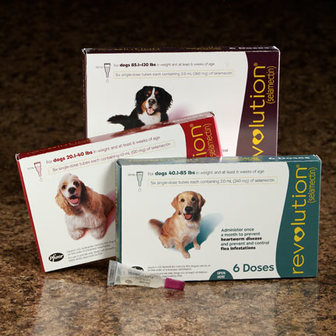
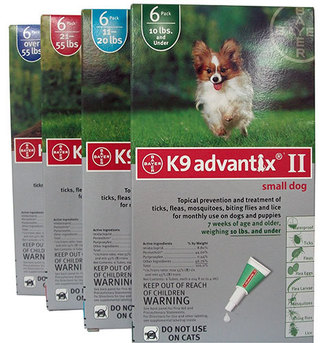
 RSS Feed
RSS Feed

